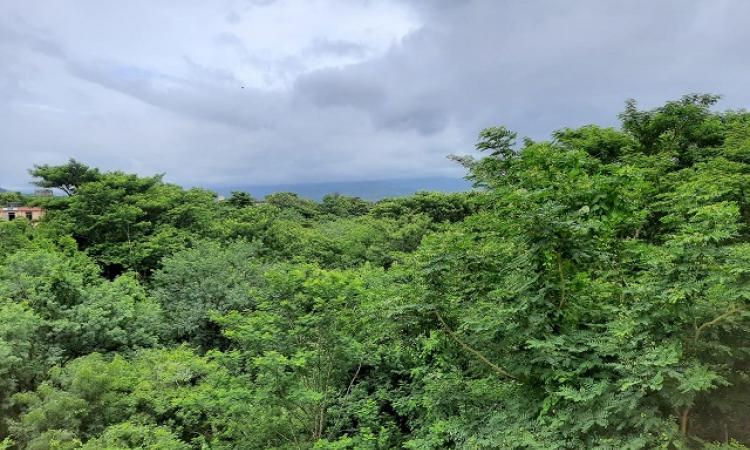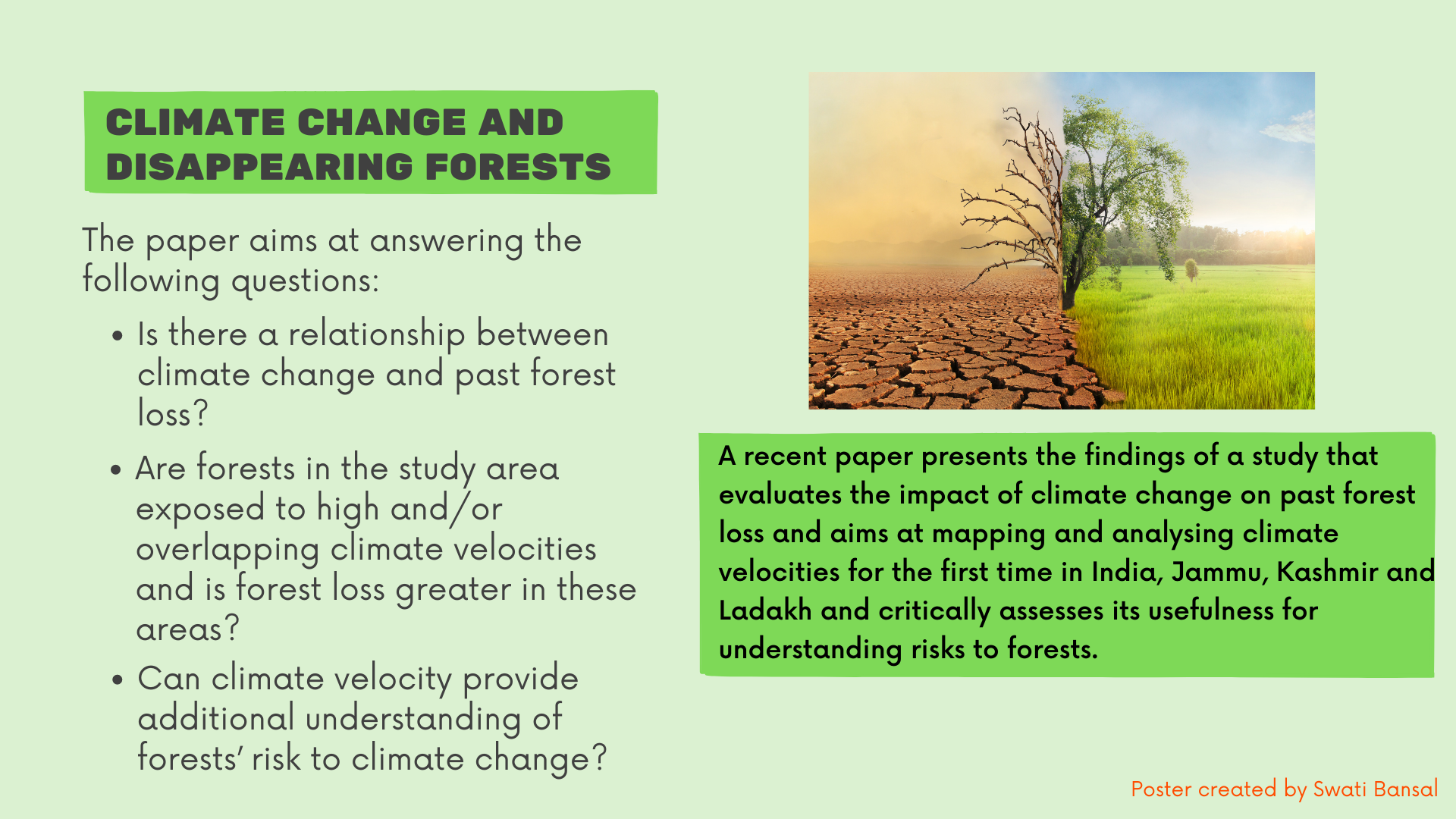
Forests are being destroyed at an alarming rate world over with tropical forests - hot spots of biodiversity experiencing the largest declines. While land use changes are the major cause for this decline, climate change effects could exceed these in the near future informs this paper titled 'The role of climate in past forest loss in an ecologically important region of South Asia' published in the journal Global Change Biology.
Impacts of climate change on forests depend on geographical location and interactions between climate variables. Forest cover in India has been undergoing a rapid decline due to land use changes triggered by increased demand for agricultural production to feed the increasing population, livestock rearing, timber extraction along with cultural practices such as shifting cultivation.
Climate change in India has led to warming, increased frequency of high-intensity rain events, higher maximum temperatures, warmer winters and erratic monsoons spelling a red signal for India's agricultural-driven economy.
Whereas the effect of land use change is well documented, there is little information on the role climate change, especially climate change velocity has played in past forest loss. Climate velocity involves understanding the speed and direction of climate movement at any point in space.
The paper presents the findings of a study that evaluates the impact of climate change on past forest loss and aims at mapping and analysing climate velocities for the first time in India, Jammu, Kashmir and Ladakh and critically assesses its usefulness for understanding risks to forests.

The study finds that:
Forest loss is real
A total of 20,472 km2 of forest has been lost during 2001 to 2018, accounting for 7.34 percent of the forest cover.
Three key areas of high forest loss include the combined regions of the north east and the east hilly region, the nexus of the central northwest, west central and peninsular regions and a few districts in the northern Western Ghats. The Northeast region has experienced over four times the forest loss as compared to other regions over the last five years.
Seasonal and regional variations due to climate change
Climate change has led to increase in rainfall in the monsoon season, and decrease in the remaining three seasons. At times, the monsoon velocities have reached twice the speed of other seasons, while the other seasons are slowly getting dry. The fastest velocities have been found in districts bordering the west central and central northwest with the most extreme velocity recorded in the East Khasi Hills district of the NE region during the pre-monsoon season.
The study area has warmed at a rate around 0.025–0.050°C year−1, with exceptions of some central north east and northeast districts where temperature has been cooler. Seasonal analyses shows the fastest warming to be in the winter while there have been no temperature reductions in the monsoon season.
Seasonal variation has been greater for precipitation than temperature with many regions experiencing the same temperature trends year-round. The velocities of temperature and precipitation being highly variable across the study area and between seasons, have been found to have different spatial configurations.
Overlapping climate velocities and forest loss
Overlaps between high velocities (speeds) of precipitation and temperature can be found in the northern western ghats where the forest losses have been high due to higher speeds of decline in rainfall and temperature increases during the pre-monsoon season. The second example is from the north east region where higher speeds of declining precipitation overlap with high speeds of declining temperature during the post-monsoon season.
The study found that temperature decreases and slower warming were unexpectedly the strongest predictors for forest loss. Although cooler temperatures in the tropics are not thought to be a direct threat to forests, indirect effects such as reduced agricultural yields or additional fuelwood collection led to forest loss.
Precipitation decreases and faster velocities were most associated with increased losses. This trend was strong east hilly region and northern western ghats, near borders between regions. Precipitation increases were also associated with increased loss in some regions.
Seasonal and regional variations in the climate–forest loss relationship in the study area
Regionally, climate affected forest loss in different ways, both in terms of exposure and the direction. Forests in the north west had a greater variety of climate variables correlated with forest loss. The north east was found to be resilient to climate changes due to lower exposure, and more resilient forest types and shifting cultivation and agricultural encroachment, land use change and other factors mainly played a role in forest loss. Precipitation trends fluctuated more than temperature throughout the year. The fastest velocities and largest changes in precipitation occurred in different seasons (pre-monsoon and monsoon) to those of temperature (post-monsoon and winter).
Climate velocity for protection of forests and biodiversity
This study found that measuring climate velocity greatly helped to provide additional information on spatial variability of climate change and its implications for forest loss. If forests respond in the way that the velocity mechanism expects, climate velocity should be an important component of management plan for protecting forests in India, Jammu, Kashmir and Ladakh.
Areas where climate velocity is low can be key areas where species can survive and management strategies can ensure these low velocity areas are as protected from multiple threats as possible. Additionally, climate velocity can identify areas that are climatically heterogeneous and are key refuge areas for species. Ensuring that there are corridors between high velocity, spatially homogeneous areas, and low velocity, heterogeneous refuges could help many species transition between climatically unsuitable or rapidly changing areas to more suitable, refuge sites as well as ensuring protected areas are large enough to provide a variety of climate conditions for species.
The majority of the protected areas in the study area do not fall within the high velocity areas for either precipitation or temperature This is promising as they lie in potential refuge areas for species and the protected area status may relieve pressures from other stressors such as land use change.
The paper ends by arguing that climate change velocity can be greatly useful to get additional information on assessing the climate risk of a region and planning areas for long-term conservation. Future studies should assess the biological realism of the spatial gradient aspect of climate velocity before using it to obtain realistic estimates of forest species risk and integrate it with more biologically realistic parameters to use them in future modelling studies.